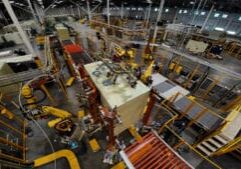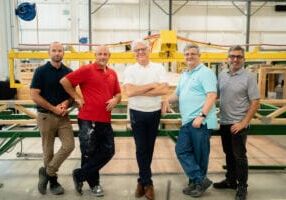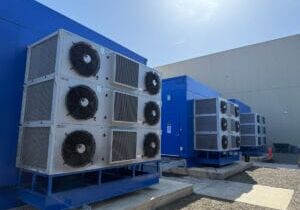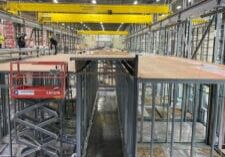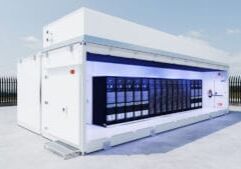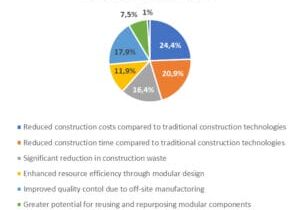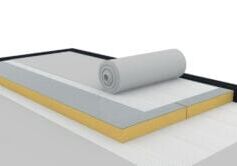Making the Leap: From Traditional General Contractor to Modular Builder
The Modular Building Institute estimates there are about 250 modular manufacturers in North America accounting for slightly more than three percent of all new commercial construction starts. With the construction industry gaining momentum, traditional general contractors (GCs) are not finding the labor needed to meet demand.
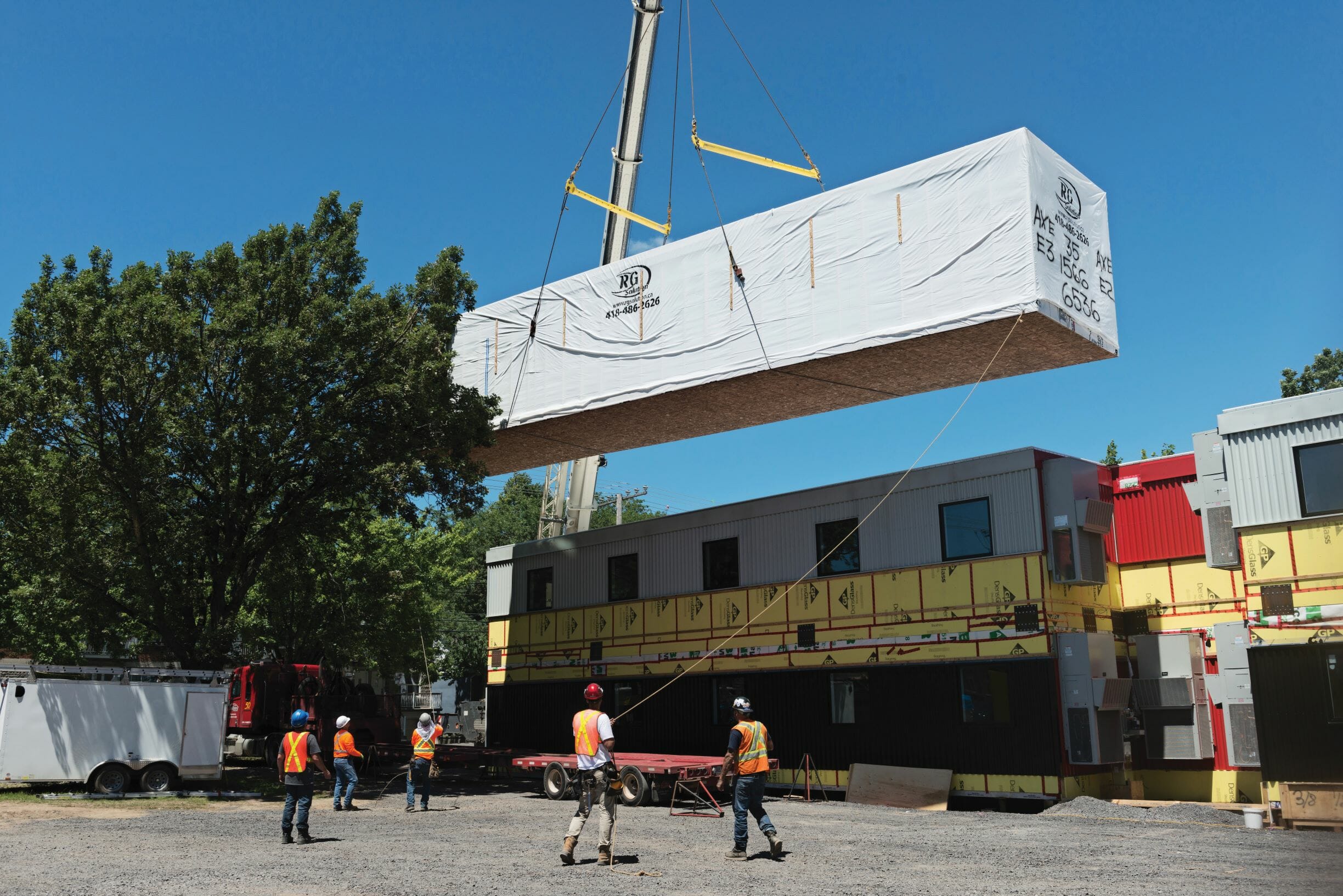
That’s one reason we are seeing more traditional contractors making the leap and turning to modular construction. In some cases, GCs are contracting with modular manufacturers on “hybrid” projects that incorporate the best of modular and site-built processes. In other cases, contractors are establishing their own prefab divisions as a hedge against this labor shortage.
PCL Construction, one of the largest general contractors in North America, created its “Agile” division about three years ago to move into the modular construction industry. MBI wanted to find out what drove PCL to this decision.
According to Terry Olynyk, Director of Business Development for PCL Construction, “The world of construction is rapidly moving towards the digital age and with that [so is] industrialized construction. PCL did not want to stay on the sidelines while this paradigm shift is occurring and wanted to lead the market by being the first fully integrated general contractor with its own modular factory.”
PCL’s strategy when approaching a project is to first ask how much of the project can be built offsite. “Our end goal is to target scopes that reduce the project critical path and gain us valuable time,” Olynyk said. He continued, “Another consideration is the complexity of the scope and challenges we have with hours of work, work location, available sub-trades to perform the work, geographical area. We then assess these constraints against our ability to ship the volumetric spaces and the associated costs. With advanced digital tools combined virtual models we are getting better at decoupling spaces and finding advantages with modular.” Anthony Zarilli’s transition took place more than 15 years ago while building homes in New Jersey. According to Zarrilli, he knew modular home building had the potential to change the future of new home construction when he first started researching it.
It all started when Zarrilli, while working alongside his father constructing custom “stick-built” houses, saw an article about modular homes which piqued his interest. After visiting several modular plants and receiving approval to build, he ordered his first modular home. Zarrilli set the home in Point Pleasant, New Jersey by himself, and because his real estate agent wasn’t quite sure how to market a modular home, he decided to sell it himself.
Once the home sold, Zarrilli repeated the process, but this time in Point Pleasant Beach. While working on that project, people started to take notice. Before he knew it, Zarrilli was being asked to build modular homes for others.
“I went from building four homes per year to eight to 12 and it just kept on growing from there,” he said. “That’s really how it all started.” Today, Zarrilli Homes is expanding into new markets such as multifamily.
Making the move to modular construction is not without some challenges. Every aspect of the construction industry is considered from the perspective that the materials and labor show up on a specific site and work begins there. Moving construction to an offsite location requires greater coordination and communication among all parties. Everything from insurance to legal consideration to payment schedules need to be discussed and agreed upon in in advance.
Related Listening:
How Owner/Developers Can Best Get Started with Modular Construction w/ R & S Tavares Associates
In this episode of MBI's Inside Modular podcast, Pedro Tavares and Anthony Gude of R & S Tavares Associates share best practices for owner/developers looking to incorporate modular construction into their upcoming projects.
MBI is actively working with other organizations to address many of these site related barriers, including providing more resources in the building codes, a design guideline for architects, and a standard contractual language between general contractors and modular manufacturers.
But for many contractors, it’s simply a matter of time before this process is mainstream. Olynyk sums it up this way, “design tools and materials have greatly advanced over the past 20 years. The construction industry has been building the same for over 100 years and is about to change. A significant skilled labor decline has started in North America coupled with the rising cost of labor and productivity falling. The construction industry will soon be forced to look at alternatives that will keep the projects on track. We will soon realize a cost shift where onsite “stick-built” becomes more expensive than modular construction. Lack of construction labor, quality concerns, and project certainty with modular solutions will force the construction industry into a long overdue change.”
Other Contractors Making the Leap
Chicago-based Skender recently announced plans to open a new Skender Manufacturing facility that will assemble modular building parts for senior housing, multifamily, healthcare, and other commercial buildings in the Windy City. Manufacturing will begin as soon as this November.
Baltimore-based general contractor Whiting-Turner has a history of delivering successful modular projects including student housing and hotels. The company touts “prefab and modular” as part of their corporate expertise now. According to their website, “Prefabrication of building systems and components is made possible by the accuracy of the digital submission process. This saves costly rework; reduces waste, installation time and onsite labor; and significantly enhances quality and safety.”
This article originally appeared in the Modular Advantage Magazine - Fourth Quarter 2018 released in November 2018.
More from Modular Advantage
Resia: Breaking All the Rules
Resia Manufacturing, a division of U.S.-based Resia, is now offering prefabricated bathroom and kitchen components to industry partners. Its hybrid fabrication facility produces more precise bathroom and kitchen components (modules) faster and at lower cost than traditional construction. Here’s how Resia Manufacturing does it.
How LINQ Modular Innovates to Bring Modular To The Market in the UAE and Beyond
LINQ Modular, with an office and three manufacturing facilities in Dubai, is a modular firm based in United Arab Emirates. The company is on a mission: to break open the housing and construction markets in the Gulf Cooperation Council (GCC) area with modular.
ModMax: Redefining Modular Construction with Confidence and Precision
ModMax was born out of frustration—frustration with five persistent pain points in modular construction: Permitting bottlenecks. Production delays. Rigid designs. Disconnect between “the office” and the field. Lack of transparency and communication.
LifeArk: Disaster-Resilient Housing from Recycled Plastic and 100-year-old Technology
Wee compares LifeArk’s housing units to Yeti coolers, as they are built similarly. Each component takes 15 to 20 minutes to manufacture, has an R-value of 40, and includes molded slots and chases for wiring, plumbing, fire sprinklers, and other utilities.
Building the Future of Modular Edge Infrastructure
The edge data center market is expanding rapidly, driven by the surge in AI workloads, IoT adoption, and the need for localized compute power. In these environments, sustainability, scalability, and reliability are non-negotiable. Cooling is among the most complex challenges for operators—and one of the most decisive factors in long-term success.
Accelerating Light-Gauge Steel Construction: A Semi-Automated Digital Workflow for Off-Site Projects
For construction professionals, the message is clear. By adopting semi-automation and digitalization, companies can deliver projects faster, more accurately, and more profitably, while also building stronger collaboration across teams. The approach is not about replacing people with machines, but about empowering people with better tools and processes.
Why Modular Data Centers Are Gaining Momentum
Artificial intelligence, high-performance computing, and edge applications push the limits of traditional “stick-built” data centers. They take years build, often struggle with high density workloads, and aren’t optimized for deployments near end users. Modular data center platforms are purpose-built to address these challenges, offering flexibility and scalability to adapt to evolving technologies, while opening new opportunities for the modular construction industry.
Supply Chain Innovation in Action: 5 Habits Every Modular Leader Should Practice
By applying these principles to supply chain practices — collaborative planning, strategic procurement, scenario modeling, digital tools, and transparent forecasting — construction leaders can build value chains that are not just efficient and agile, but truly innovative.
Exploring the Role of Modular Integrated Construction (MiC) in Advancing Circular City Principles – A Survey of Stakeholder Perspectives
The survey findings highlight the significant potential of Modular integrated Construction (MiC) in advancing the development of circular cities. By reducing costs, accelerating construction timelines, and minimizing waste generation, MiC offers a promising approach to sustainable urban development.
The Use of MS POLYMER™-Based Sealants and Adhesives in Modular Building
These products combine flexibility and elastic recovery with excellent adhesion to different substrates and have already shown their usefulness in traditional construction. Now it’s time for them to be put to use in the modular construction industry.

